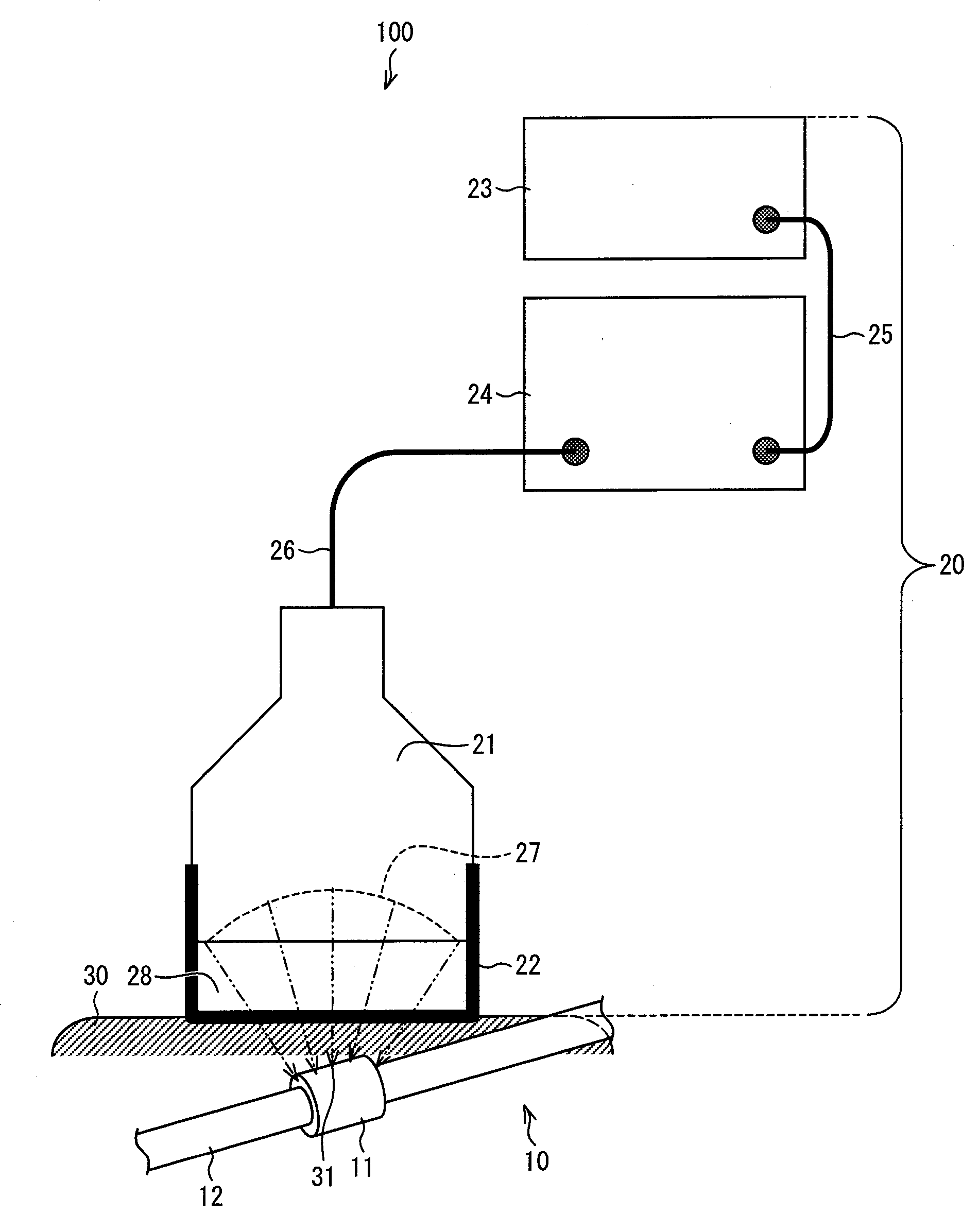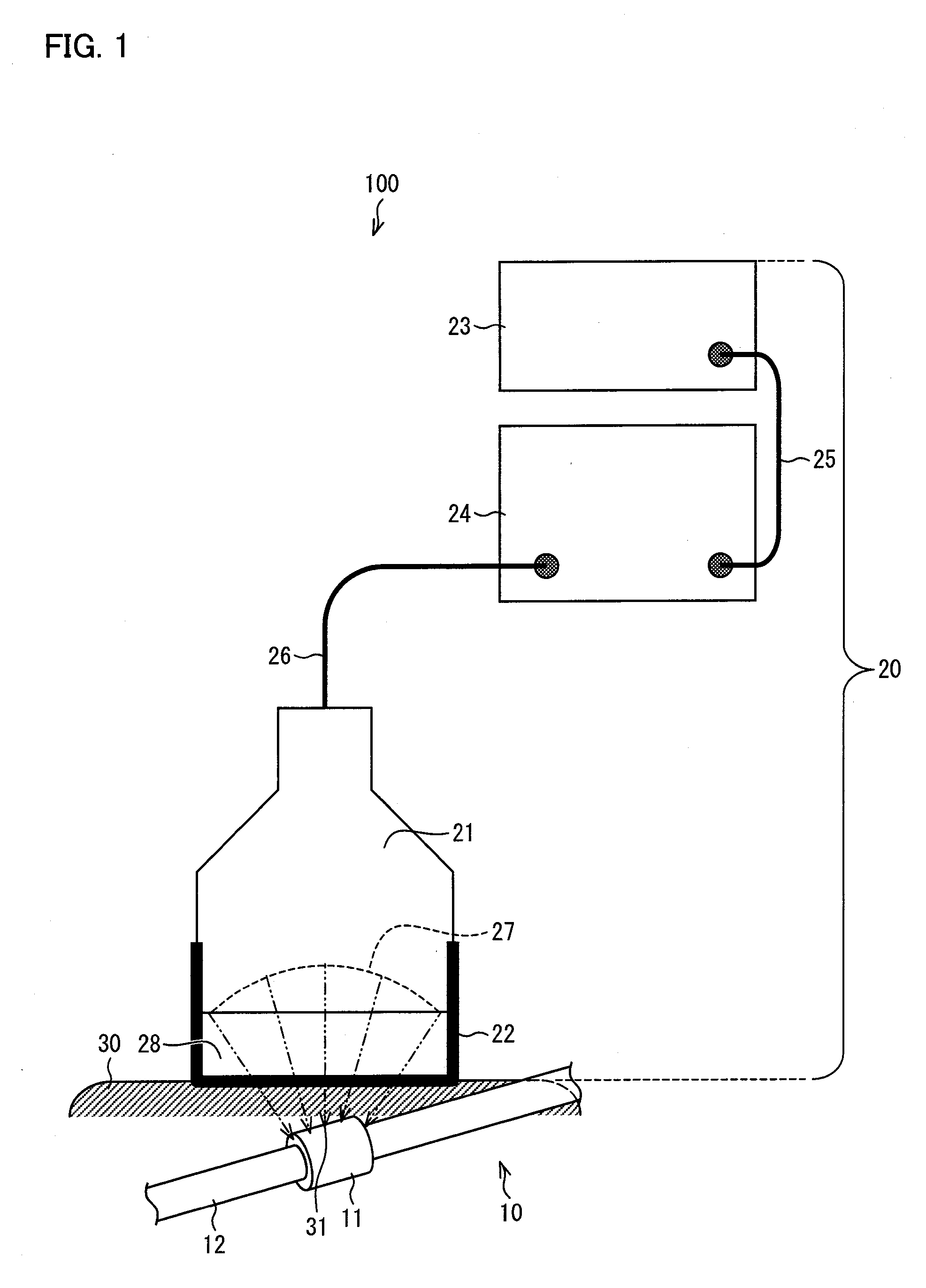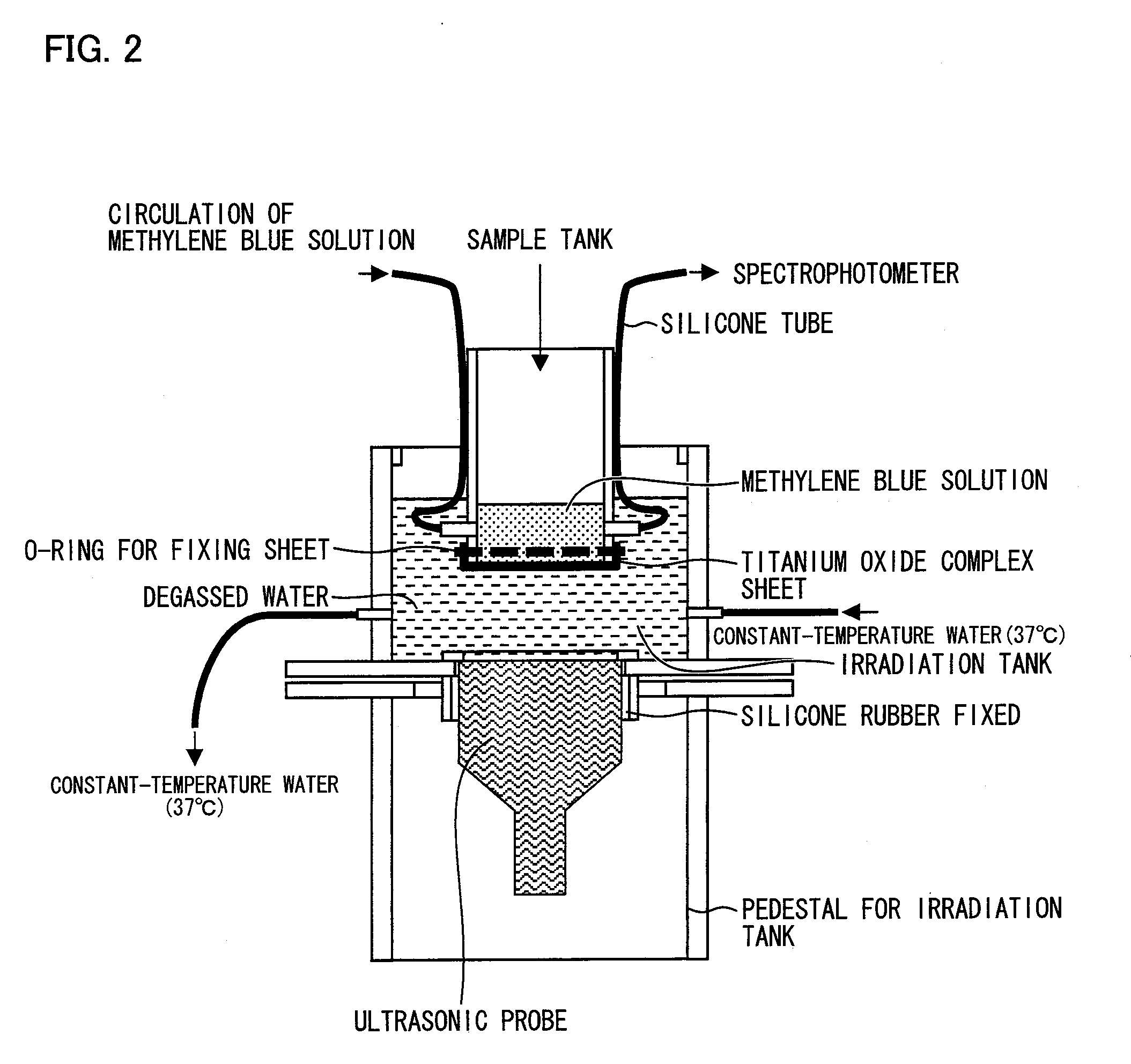Ultrasonic medical apparatus
a medical device and ultrasonic technology, applied in the field of ultrasonic medical devices, can solve the problems of bacterial infection and no means of solving it, and achieve the effects of eliminating the foothold of bacteria proliferation, stimulating angiogenesis, and enhancing the anti-infective
- Summary
- Abstract
- Description
- Claims
- Application Information
AI Technical Summary
Benefits of technology
Problems solved by technology
Method used
Image
Examples
example 1
[0160]
[0161]In order to evaluate the generation of OH radicals by ultrasonic irradiation of a titanium oxide composite material, a focusing-type ultrasonic probe, made of lead zirconate titanate (“PZT”), which has a resonant frequency of 500 kHz, an aperture element diameter of 40 mm, and a curvature radius (focal length) of 30 mm was prepared (see the ultrasonic probe (21) of FIG. 1 for the constitution thereof). The ultrasonic probe was designed in consideration of the required sound output intensity and the required width of a beam in the focal area, and the frequency and the aperture diameter were determined by means of numerical simulations in consideration of the properties of piezoelectric materials. Further, the focal length was selected in consideration of irradiation of a superficial part of the skin. As a result of using a pressure-sensitive paper method “Chô-onpa Binran (Ultrasound Handbook)” (Ultrasound Handbook Editorial Committee ed., Maruzen Co., Ltd., 1999, pp. 471....
example 2
[0175]
[0176]For the purpose of checking the effect of stimulation of angiogenesis by ultrasonic irradiation of a titanium oxide complex sheet, the amounts of tumor necrosis factor (TNFα) produced in four patterns (namely (1) US(−)AmTiO2(−), (2) US(+)AmTiO2(−), (3) US(−)AmTiO2(+), and (4) US(+)AmTiO2(+)) of combinations of the presence or absence of ultrasonic irradiation (US) and the presence or absence of a titanium oxide complex sheet (AmTiO2) were determined. It should be noted that TNFα is known as an indirect angiogenesis stimulator, produced from fat cells, macrophages, lymphocytes, etc., which induces vascular endothelial growth factor (refer to P. Reher et al.: CYTOKINE, 11, 416-423 (1999) and A. L. Harris: Lancet, 349 (suppl II), 13-15 (1997)). Furthermore, the numbers of cells that survived in the four patterns were evaluated simultaneously.
[0177](Cell Culture)
[0178]Human bone marrow-derived mononuclear cells (Lot No. 070912B, Lonza Walkersville, Inc., Md., USA) were cultu...
example 3
[0189]
[0190](Cell Culture)
[0191]Human bone marrow-derived mononuclear cells (Lot No. 071853A, Lonza Walkersville, Inc., Md., USA) were cultured in a medium RPMI 1640 (GIBCO) with FBS (−) at 37° C. in the presence of 5% C02.
[0192](Ultrasonic Irradiation)
[0193]The experimental system, shown in FIG. 2, into which the ultrasonic probe had been incorporated was used to irradiate samples with continuous ultrasonic waves for 5 minutes at a frequency of 493.8 kHz with an output of 225 mW / cm2.
[0194](Measurement of Vascular Endothelial Growth Factor (VEGF) in Cell Culture Medium Supernatants)
[0195]In each cell culture tube, a cell suspension prepared at 1×106 cells / mL was scattered on a sample sheet (i.e., a polyester (PET) sheet having a diameter of 15 mm), and then cultured for 24 hours. After the culture, the sample sheet was irradiated with ultrasonic waves at 37° C. for 5 minutes by immersing the cell culture tube in the irradiation tank of the experimental system of FIG. 2. After that,...
PUM
| Property | Measurement | Unit |
|---|---|---|
| frequency | aaaaa | aaaaa |
| frequency | aaaaa | aaaaa |
| particle diameter | aaaaa | aaaaa |
Abstract
Description
Claims
Application Information
 Login to View More
Login to View More - R&D
- Intellectual Property
- Life Sciences
- Materials
- Tech Scout
- Unparalleled Data Quality
- Higher Quality Content
- 60% Fewer Hallucinations
Browse by: Latest US Patents, China's latest patents, Technical Efficacy Thesaurus, Application Domain, Technology Topic, Popular Technical Reports.
© 2025 PatSnap. All rights reserved.Legal|Privacy policy|Modern Slavery Act Transparency Statement|Sitemap|About US| Contact US: help@patsnap.com



